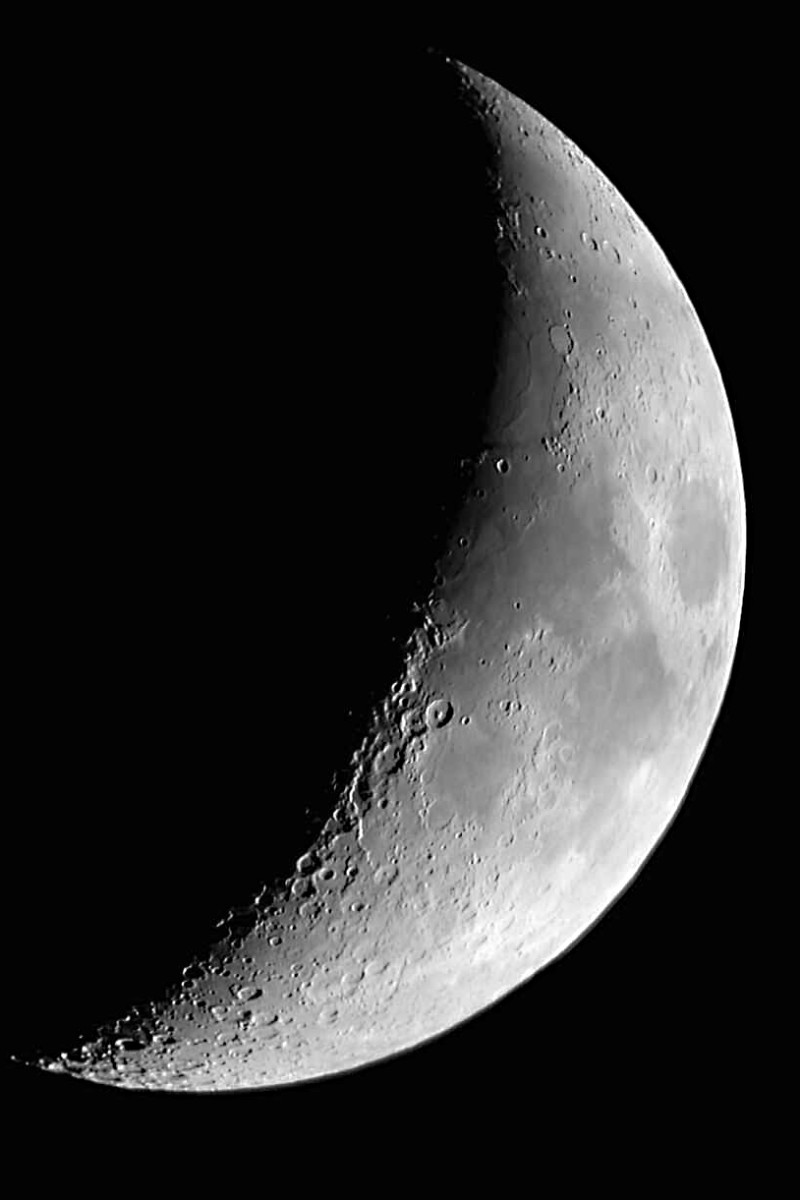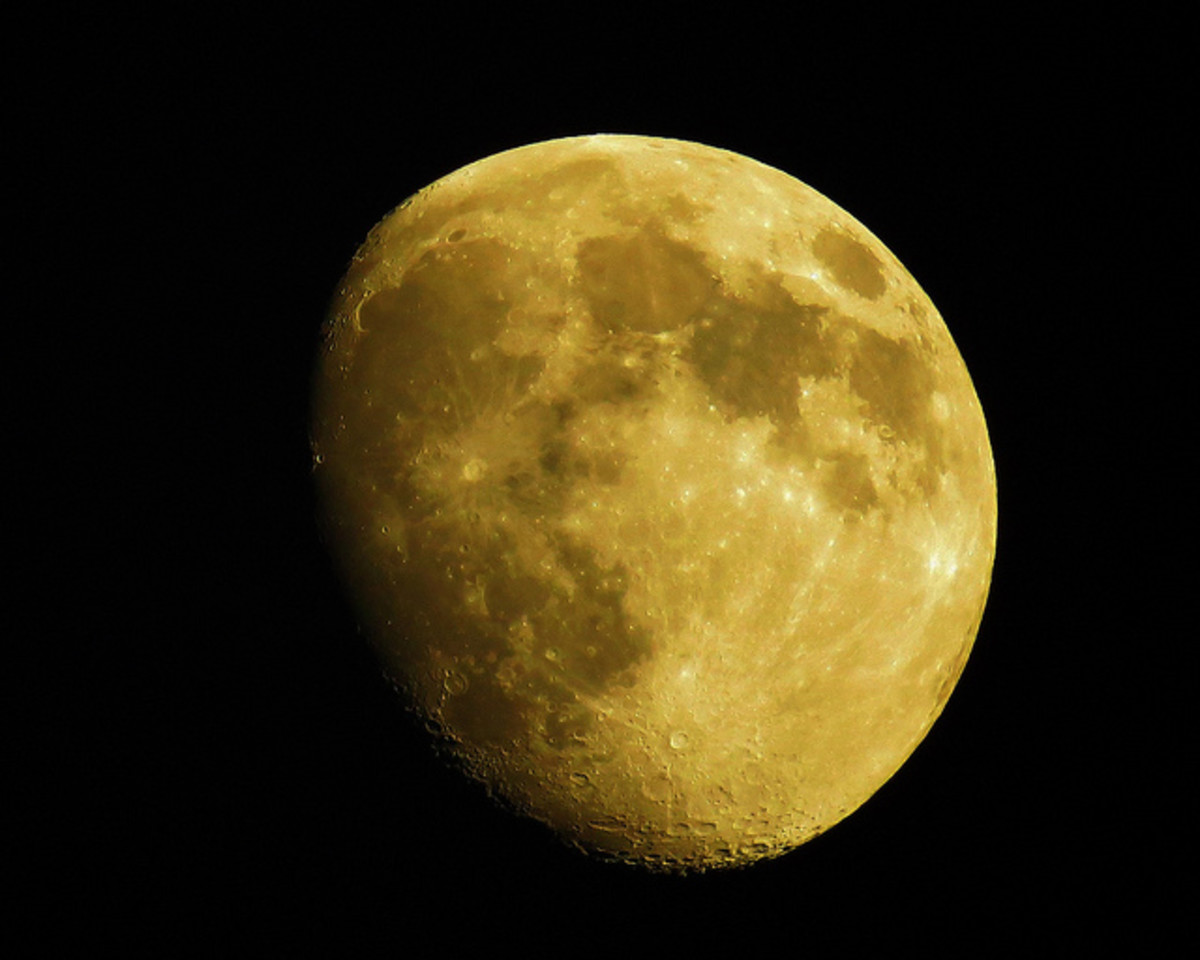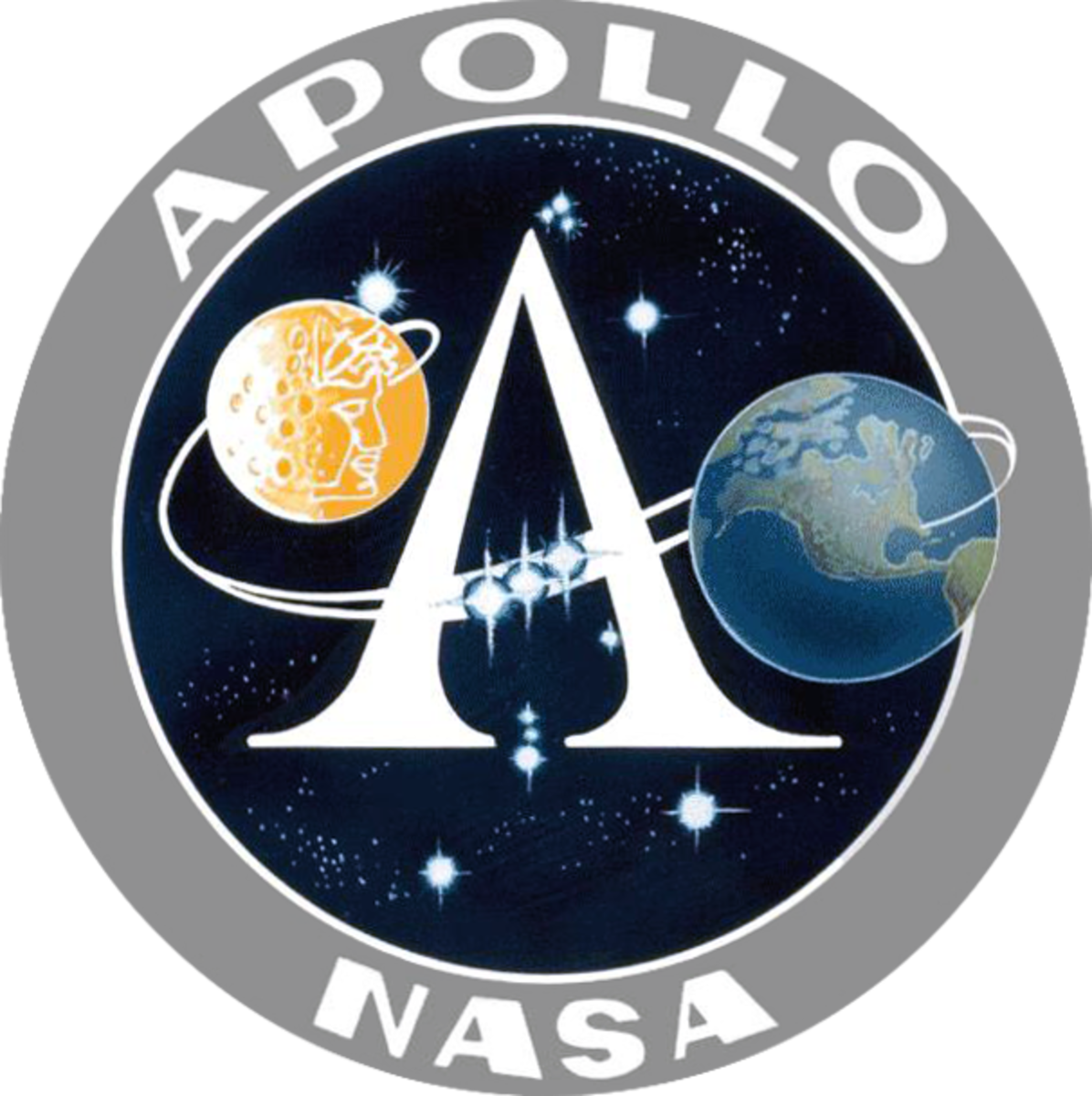Recycling The International Space Station
The International Space Station, known as the ISS, is a huge orbital habitat for astronauts, that was built by a coalition of several nations and organizations, including the USA, Russia, Japan, and the European Space Agency. It is, by far, the largest thing that has ever been assembled in orbit. There is a problem, though. Any object that is orbiting the Earth will eventually be pulled lower and lower by the Earth's gravity, and it will fall to Earth. The ISS is so huge (it's wider than a football field, if you count the width of it's solar panels) that if it fell on a densely populated city, the impact would cause thousands of deaths. Obviously, it has to be removed from orbit, but how?
I have an idea that may be an ideal solution to the problem of getting rid of the ISS. The ISS can be dismantled, and after it is taken apart, the pieces of the ISS can be taken to the Moon, and they can be placed on the surface of the Moon, where they will function as a permanent lunar base.
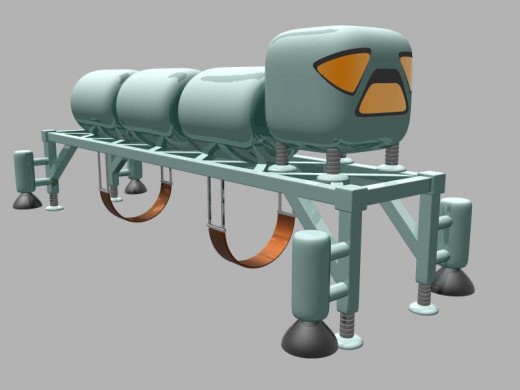
The illustration above is an invention that I call the Lunar Cargo Vehicle, or LCV. If this invention is built, it can be used to transport sections of the ISS to the Moon, and it can place them on the surface of the Moon. The LCV has a rectangular frame, with a rocket engine at each of it's four corners. There are two slings hanging below the frame, these slings are used to hold a module that has been removed from the ISS. There are several fuel and oxidizer tanks on top of the frame, and there is also a crew module on top of the frame. The crew module contains living space, and equipment for a small group of astronauts.
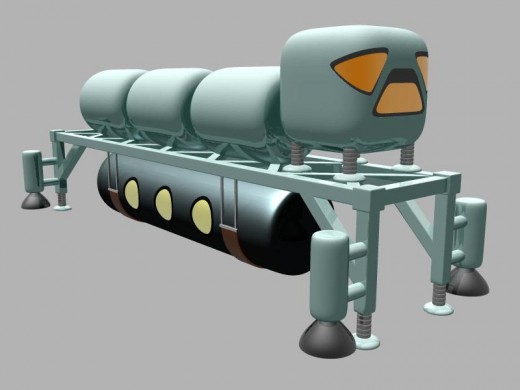
The illustration above shows the LCV with one of the modules from the ISS attached to it.
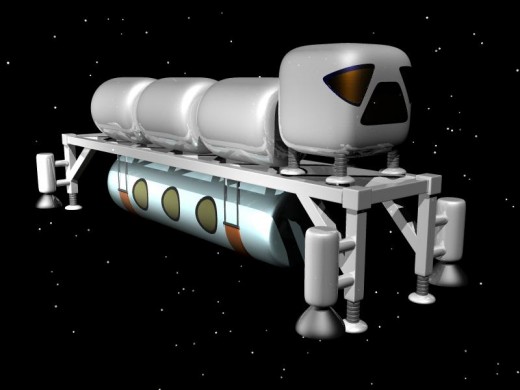
The illustration above shows what the LCV would look like in space.
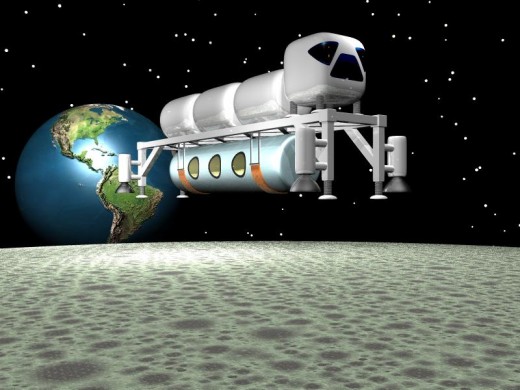
The illustration above shows what the LCV would look like, when it is descending to the lunar surface.
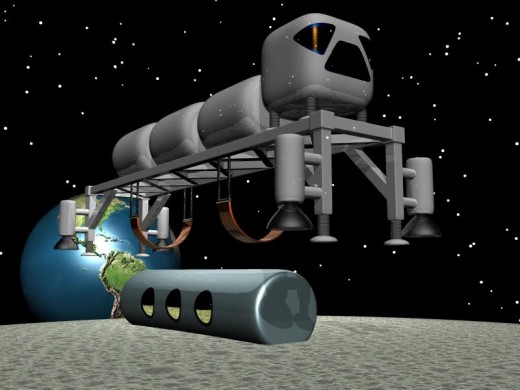
The illustration above shows the LCV after it has placed a module from the ISS on the lunar surface. The LCV is shown taking off and leaving the Moon after the ISS module has been left on the Moon. All of the modules from the ISS can be placed on the Moon, in this way. It is also possible for the solar panels from the ISS to be taken to the Moon, when then can be installed on the surface with the other modules. Computer graphic images in this article made by Anthony Ratkov.

